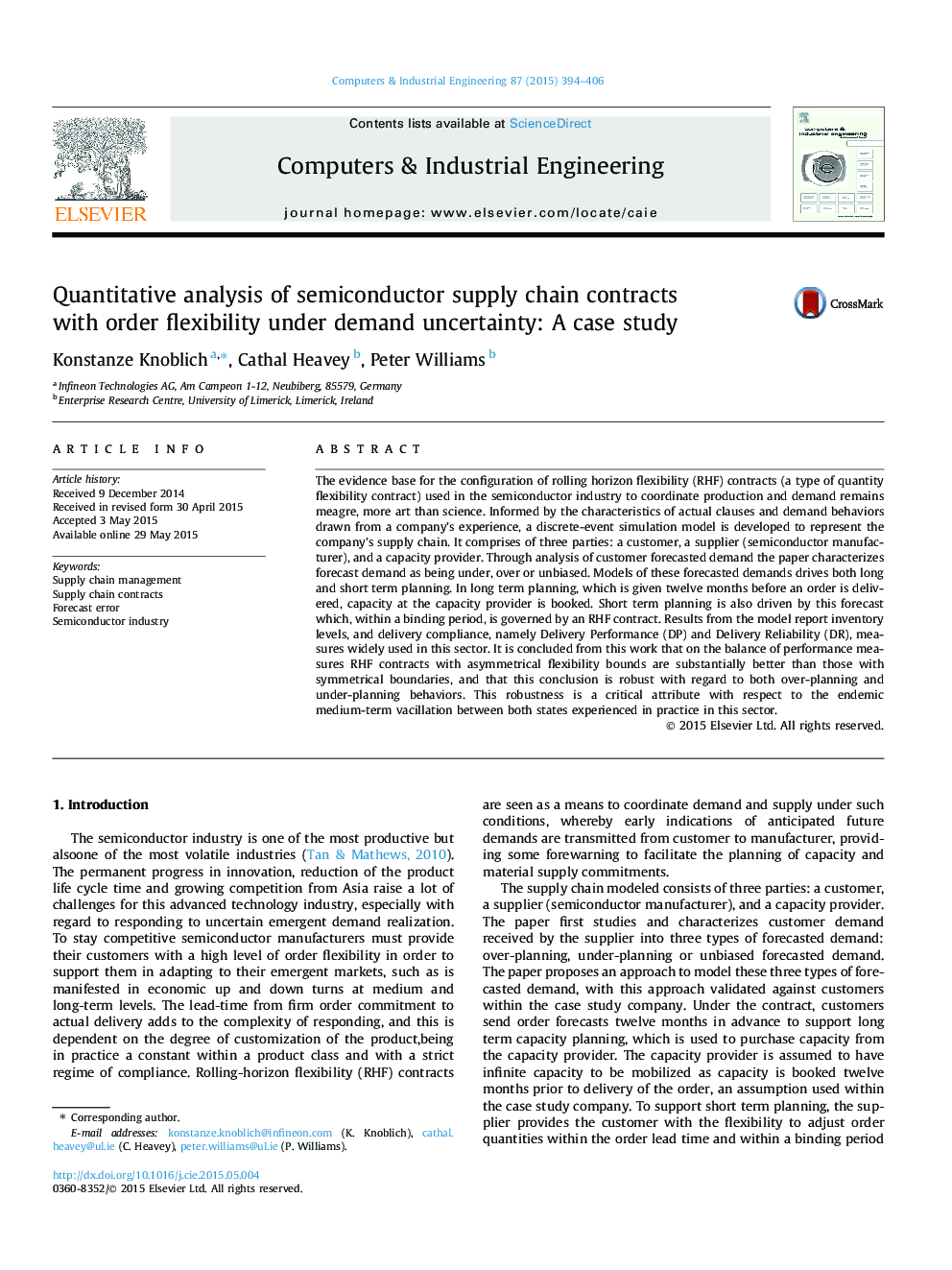| Article ID | Journal | Published Year | Pages | File Type |
|---|---|---|---|---|
| 1133573 | Computers & Industrial Engineering | 2015 | 13 Pages |
Abstract
The evidence base for the configuration of rolling horizon flexibility (RHF) contracts (a type of quantity flexibility contract) used in the semiconductor industry to coordinate production and demand remains meagre, more art than science. Informed by the characteristics of actual clauses and demand behaviors drawn from a company's experience, a discrete-event simulation model is developed to represent the company's supply chain. It comprises of three parties: a customer, a supplier (semiconductor manufacturer), and a capacity provider. Through analysis of customer forecasted demand the paper characterizes forecast demand as being under, over or unbiased. Models of these forecasted demands drives both long and short term planning. In long term planning, which is given twelve months before an order is delivered, capacity at the capacity provider is booked. Short term planning is also driven by this forecast which, within a binding period, is governed by an RHF contract. Results from the model report inventory levels, and delivery compliance, namely Delivery Performance (DP) and Delivery Reliability (DR), measures widely used in this sector. It is concluded from this work that on the balance of performance measures RHF contracts with asymmetrical flexibility bounds are substantially better than those with symmetrical boundaries, and that this conclusion is robust with regard to both over-planning and under-planning behaviors. This robustness is a critical attribute with respect to the endemic medium-term vacillation between both states experienced in practice in this sector.
Related Topics
Physical Sciences and Engineering
Engineering
Industrial and Manufacturing Engineering
Authors
Konstanze Knoblich, Cathal Heavey, Peter Williams,
